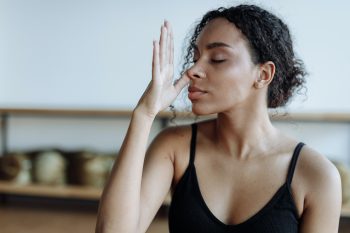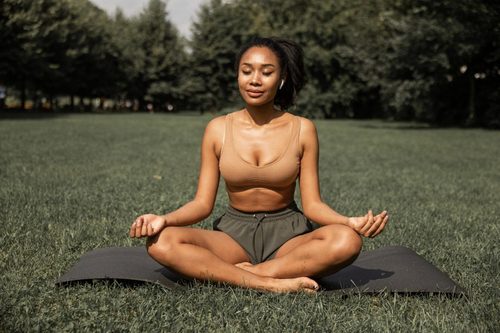The start of the New Year isn’t always as smooth as we’d like it to be. With the return back to work and regular scheduling, the peace we find over the holidays becomes clouded by the anxiety that comes with getting back to work and dealing with everything life throws at us.
It’s okay to feel overwhelmed when you’re starting a New Year, but it’s important not to stress yourself out too much. You need that energy for your 2023 self to thrive! So, this year, let’s look at adopting healthy practices that will help us combat stress and anxiety. One of these practices is, you guessed it, breathwork!
If you’re feeling anxious right now, qualified nurse and mindfulness teacher Debbie Lyn Toomey has a few suggestions.
“When we are stressed, our breathing gets impacted,” says Debbie.
“It becomes faster and shallower, activating our sympathetic nervous system, which is our flight or fight response. Fortunately, we can consciously change our response from stress to relaxation by just changing the way we breathe.”

Pexels
Debbie explains that altering the pattern or rate of your breathing will activate a rest and digest response instead of an uncomfortable flight or fight response. Here are a few stress-relieving breathing exercises you can try at home if you’re feeling anxious right now.
Belly breathing
Diaphragmatic breathing is a common form of breath-work practiced by many.
Find a comfortable position either sitting upright or laying down on your back. Remember to keep your shoulders relaxed. Place one hand on your chest and one hand over your belly button. Breathe in deeply through your nose for at least four seconds.
Focus on expanding your belly as you breathe in so that your hand on your chest remains fairly still. Hold your breath slightly before slowly exhaling for four seconds. Focus on your belly becoming smaller while breathing out (either through the nose or mouth). Repeat this cycle at least five times, or until you feel more calm.
The pursed lip trick
Holistic Nutritionist Meghan Livingstone recommends the pursed lips breathing exercise as a way to manage stress and sudden anxious feelings. This technique relies on pursing the lips like you’re about to blow out a candle. This will enable you to breathe out at a much slower pace.
To perform this exercise, find a comfortable place to sit or lay down. Breathe in through the nose for four seconds and then exhale through pursed lips until all the air has naturally flown out. Repeat this exercise as often as you’d like to, or until you feel more relaxed.
Square breathing technique
The square breathing method helps attain a greater sense of calm and are highly effective for reducing anxiety in the body.
To perform the square breathing method, find a comfortable position to sit in. Relax your shoulders and pay attention to your natural breathing pattern. Similar to a square that has four sides, this exercise has four steps.
- Slowly breathe in through your nose to the count of four.
- Hold your breath completely for four seconds.
- Slowly exhale through your mouth to the count of four (or to the count of eight if you’d like to extend it).
- Hold your breath again for four seconds.
Repeat this cycle as often as you’d like to and remember to focus on bringing air into the lower part of your lungs in order to avoid shallow breathing.
Why should you try breath-work?
Breathing exercises are wonderful anti-anxiety tools to keep in your back pocket at all times. They reduce your heart rate and bring you into a relaxed state almost instantly.
These breathing methods will relax your muscles and alleviate your stress and anxiety. If you’re not sure when to perform them, make at least one of the techniques part of your daily self-care routine. You could even incorporate it into your night-time regimen, or make it a morning ritual before breakfast.
Whatever time or place you prefer, remember to look after yourself at the start of the New Year, when you’re heading back to work or studies. It’s natural to feel stressed, so take comfort in the knowledge that you are not alone.
ALSO SEE:
Healthy swops for cereal to make your kids’ morning that much better
Feature Image: Pexels

